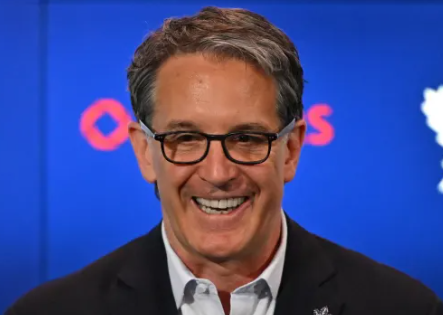The Toronto Maple Leafs GM Wars are becoming quite stale and uninteresting.
The former GM of the Toronto Maple Leafs was a controversial figure because he (ever so slightly, it must be noted) attempted to introduce new ideas in a league that is highly resistant to change. While most have moved on, those who despise him continue to bring him up in conversation, albeit a very small minority. Unfortunately, in today’s world, the smallest and most absurd group tends to dominate the conversation if they are the loudest.
I mention this not to revisit discussions about the previous Leafs GM, but to focus on the new GM, Brad Treliving.
Treliving’s decision to sign Nylander instead of opting out of the CORE FOUR strategy essentially confirms what we already know: Brendan Shanahan is the one calling the shots for the Toronto Maple Leafs and he wants to prove himself right at least until the end of Tavares’ contract.
Under Dubas, the Leafs were best known for their Studs and Duds approach to building a roster. This involved allocating most of their salary cap space to a small group of star players while filling out the rest of the roster with inexpensive options.
However, by re-signing Nylander, they essentially doubled down on this strategy, which is fine. In my opinion, it’s the right approach for building a roster in a salary cap league. However, this move contradicted what Brad Treliving had done prior to the season.
Given that they are clearly not foolish, one might speculate that they had considered trading Nylander but were dissatisfied with the trade options available. The problem is that this mid-season change really complicated their current roster situation. (This is evident in their lack of activity at the trade deadline, despite Matthews and Marner likely being at the peak of their careers).
Dubas, the originator of this idea, recognized a significant disparity in pay and contribution among non-star players in the league. Players like Max Domi may be good but not stars, yet they are paid much more than their lesser counterparts, making them a poor investment. It is believed that star players are crucial and worth at least a win, while the rest of the players fall into a range of zero to .99 wins.
To make the most of the salary cap, teams can focus on investing in star players by saving money elsewhere, like signing players for the league minimum. Occasionally, exceptions are made like Dubas did with Jarnkrok, but by adding extra years to keep the cap hit low. This strategy allows teams to allocate more funds towards players who significantly impact the game.
The success of this approach was evident when the Leafs added several impactful players last year with the savings from non-stars. However, overspending on non-star players like David Kampf disrupts this strategy and limits the team’s ability to add more star players. The Leafs’ current allocation of $24 million to non-star players impedes their ability to bring in more impactful players.
It’s clear that the Leafs need to either fully embrace Dubas’ strategy or move on from it entirely. Continuing on their current path, particularly with the signing of Nylander, is not sustainable for the team’s success. It may be time for the Leafs to part ways with Dubas and make a clear decision on their team-building approach.
